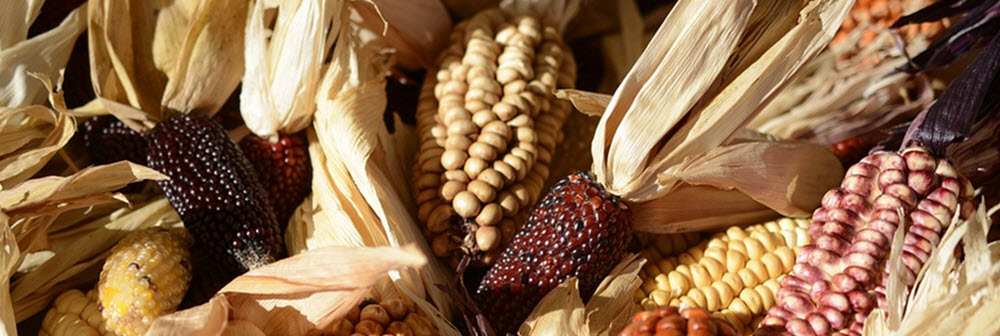Contents
Corn, also known as maize, is one of the major cereal grains. Unlike many other staple cereals – such as wheat, barley, rye and oats – maize doesn´t hail from the Old World – it is native to the Americas and was first cultivated in southern Mexico circa 10,000 years ago.

Corn is an important food staple in many parts of the world and is the most produced cereal by weight – surpassing even rice and wheat. Corn is produced for both human and animal consumption and also have industrial applications. Among other things, corn is converted into biodiesel and ethanol.
Corn can be farmed in tropical, subtropical and temperate climates, but it is important to select a version that is suitable for local conditions.
Scientific classification
The scientific name for domesticated corn is Zea mays subsp. mays.
Kingdom: Plantae
Order: Poales
Family: Poaceae
Subfamily: Panicoideae
Genus: Zea
Species: Zea mays
Subspecies: Z. mays mays
Corn farming
Corn is the most cultivated grain in the world by weight. For the year 2018, the total world production exceeded 1.14 billion tonnes. Over one-third of that corn was grown in the United States, and corn production plays a major role in the economy of the United States.
When the United States Department of Agriculture (USDA) released the 2020 planting intentions report, nearly 97 million acres were devoted to planting corn in the United States. A majority of the U.S. corn is grown within the ”Corn Belt”, a loosely defined part of the Midwestern U.S., including Iowa, Illinois, Indiana, southern Michigan, western Ohio, eastern Nebraska, eastern Kansas, southern Minnesota, and parts of Missouri. In some contexts, South Dakota, North Dakota, Wisconsin, Kentucky, all of Ohio, and all of Michigan is included as well.
Iowa is the U.S. state that produces the most corn. As of 2020, Iowa has held on to that top position for 25+ years in a row and is showing no signs of letting it go. For the year 2020, Iowa´s estimated corn production was 2.30 billion bushels, and Iowa was home to nearly 13 million acres of cornfields. After Iowa, the major corn-producing U.S. states are Illinois, Nebraska, Minnesota and Indiana.

The main corn farming nations
The ten largest corn producers in the year 2018
USA: 392.5 million tonnes
China: 257.3 million tonnes
Brazil: 82.3 million tonnes
Argentina: 43.5 million tonnes
Ukraine: 35.8 million tonnes
Indonesia: 30.3 million tonnes
India: 27.8 million tonnes
Mexico: 27.2 million tonnes
Romania: 18.7 million tonnes
Canada: 13.9 million tonnes
Types of maize
Sugar-rich varieties of maize are known as sweet corn, and many of them are grown chiefly for human consumption without much processing, such as eating corn-on-the-cob or boiled individual yellow corns. Maize varieties with less sugar are known as field corn, and is the standard choice for animal feed, for making corn oil, for cornmeal and masa, and for the production of beverages such as bourbon.
The six major types of domesticated maize are:
- Dent corn
- Flint corn
- Pod corn
- Flour corn
- Popcorn
Corn syrup
Corn syrup is made from the corn of starch and is commonly used as a sweetener in food, and to soften the food´s texture, add volume and prevent sugar crystallization.
High-fructose corn syrup (HFCS) is produced from ordinary corn syrup by converting a lot of the glucose into fructose with the help of the enzyme D-xylose isomerase. The enzyme was discovered by the Japanese Agency of Industrial Science and Technology in 1965. In the 1970s, the Clinton Corn Processing Company in the U.S. began marketing HFCS together with the agency. Between 1980 and 1999, U.S. production of HFCS rose from 2.2 million tons to 9.5 million tons.

